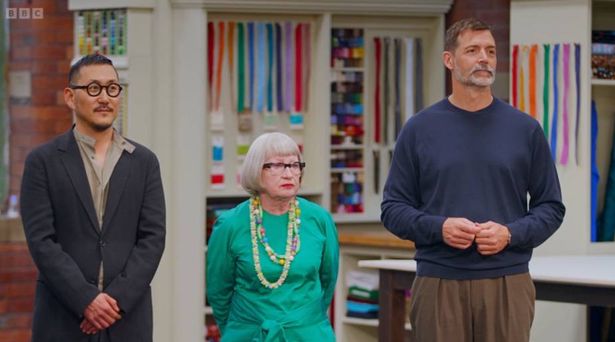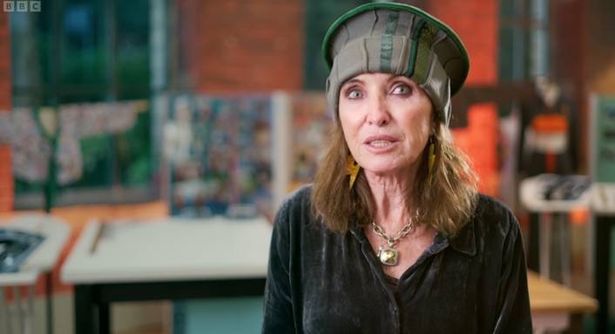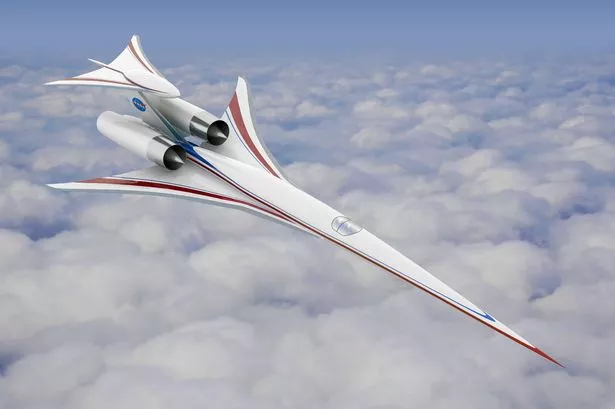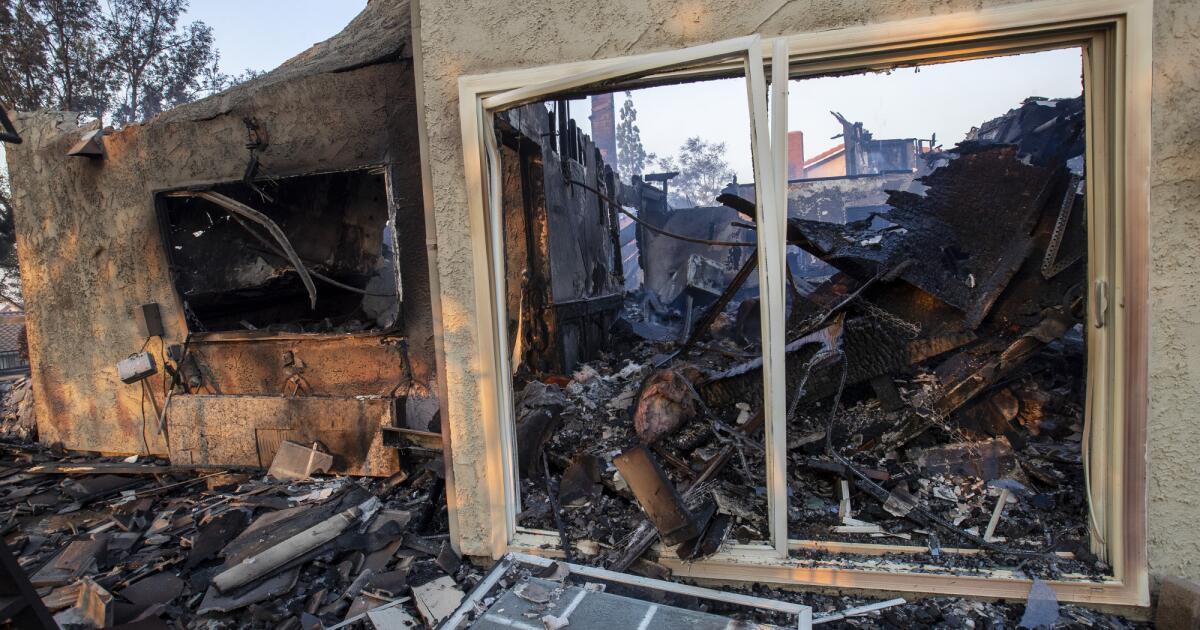Southern California Edison’s admission that its equipment may have ignited the Hurst fire in the San Fernando Valley on Jan. 7 is being seized on by lawyers suing the utility company for another fire in the same area nearly six years earlier.
Both the Saddleridge fire in 2019 and the Hurst fire this year started beneath an Edison high-voltage transmission line in Sylmar. The lawyers say faulty equipment on the line ignited both blazes in the same way.
“The evidence will show that five separate fires ignited at five separate SCE transmission tower bases in the same exact manner as the fire that started the Saddleridge fire,” the lawyers wrote of the Hurst fire in a June 9 filing in Los Angeles Superior Court.
The lawyers said the January wildfire is “further evidence” that a transmission pylon known as Tower 2-5 “is improperly grounded.”
Edison told the state Public Utilities Commission in February that “absent additional evidence, SCE believes its equipment may be associated with the ignition of the Hurst Fire.” But the company denies claims that its equipment sparked the 2019 fire, which tore through Sylmar, Porter Ranch and Granada Hills — all suburbs of Los Angeles — burning 8,799 acres.
“We will continue to focus on facts and evidence — not on preposterous and sensational theories that only serve to harm the real victims,” said Edison spokesman David Eisenhauer. He declined further comment on the case.
The Saddleridge wildfire destroyed or damaged more than 100 homes and other structures, according to Cal Fire, and caused at least one death when resident Aiman El Sabbagh suffered a cardiac arrest.
Edison is being sued by insurance companies, including State Farm and USAA, to recoup the cost of damages paid to their policyholders. Homeowners and other victims are also seeking damages. A jury trial for the consolidated cases is set for Nov. 4.
In their June 9 filing, the plaintiffs’ lawyers also claimed Edison wasn’t transparent with officials looking into the cause of the 2019 fire. One fire official characterized the utility’s action as “deceptive,” the filing said.
Edison discovered a fault on its system at 8:57 p.m. — just three minutes before the blaze at the base of its transmission tower was reported to the Fire Department by Sylmar resident Robert Delgado, according to the court filing.
But Edison didn’t tell the Los Angeles city Fire Department about the fault it recorded, the filing said. Instead the fire department’s investigation team discovered the failure on Edison’s transmission lines through dash cam footage recorded by a motorist driving on the 210 Freeway nearby, the filing said.
When Timothy Halloran, a city Fire Department investigator, went to the location of the flash shown on the motorist’s camera, he found “evidence of a failure on SCE’s equipment,” the filing said.
Halloran said in a deposition that employees of the business located where the evidence was found told him that Edison employees “attempted to purchase” footage from the company’s security camera on the night of the fire, the filing said.
“The video footage shows a large flash emanating from the direction of SCE Transmission Tower 5-2,” the filing said.
Halloran testified in his deposition that he believed Edison was trying to be “deceptive” for attempting to purchase the security camera footage and not reporting the system fault to the Fire Department, the lawyers said.
Halloran didn’t respond to requests for comment.
Edison’s maintenance of its transmission lines is now being scrutinized as it faces dozens of lawsuits from victims of the devastating Eaton fire, which also ignited on Jan. 7.
Videos showed that fire, which killed 18 people and destroyed thousands of homes, starting under a transmission tower in Eaton Canyon. The investigation into the cause of the fire is continuing.
Victims of the 2019 fire say they’ve become disheartened as Edison has repeatedly asked for delays in the court case.
“Many plaintiffs have not yet been able to rebuild their homes” because of the delays, wrote Mara Burnett, a lawyer representing the family of the man who died.
Burnett noted that Aiman El Sabbagh was 54 when he suffered a fatal cardiac arrest during the incident. His children, Tala and Adnan El Sabbagh, “feel they were robbed of things they treasured and worked hard for with no apparent recompense in sight.”
Both the Saddleridge and Hurst fires included a similar chain of events where a failure of equipment on one tower resulted in two or more fires igniting under different towers elsewhere on the line, according to lawyers for the plaintiffs.
Edison designed and constructed the towers that run through Sylmar in 1970. They hold up two transmission lines: the Gould-Sylmar 220 kV circuit and the Eagle Rock-Sylmar 220 kV circuit.
In the case of the Saddleridge fire, investigators from the Los Angeles Fire Department and the California Public Utilities Commission found that at 8:57 pm on Oct. 10, 2019, a Y-shaped steel part holding up a transmission line failed, causing the line to fall on a steel arm.
The failure caused a massive electrical fault, lawyers for the plaintiffs say, that sparked fires at two transmission towers that were more than two miles away.
State and city fire investigators say the Saddleridge fire began under one of those towers. And they found unusual burning at the footing of the other tower, according to a report by an investigator at the utilities commission.
The utilities commission investigator said in the report that he found that Edison had violated five state regulations by not properly maintaining or designing its transmission equipment.
This year’s Hurst fire ignited not far away on Jan. 7 at 10:10 p.m. It also began under one of Edison’s transmission towers.
According to Edison’s Feb. 6 report to the utilities commission, the company found that its hardware failed, resulting in equipment falling to the ground at the base of a tower.
The lawyers for the plaintiffs say that they now have more evidence of the fire’s start. They say that investigators found that the hardware failure set off an event — similar to the 2019 fire — that resulted in five fires at five separate transmission tower bases on the same line.
One of those fires spread in high winds to become the Hurst fire. Officials ordered 44,000 people to evacuate. Air tankers and 300 firefighters contained the fire before it reached any homes.








